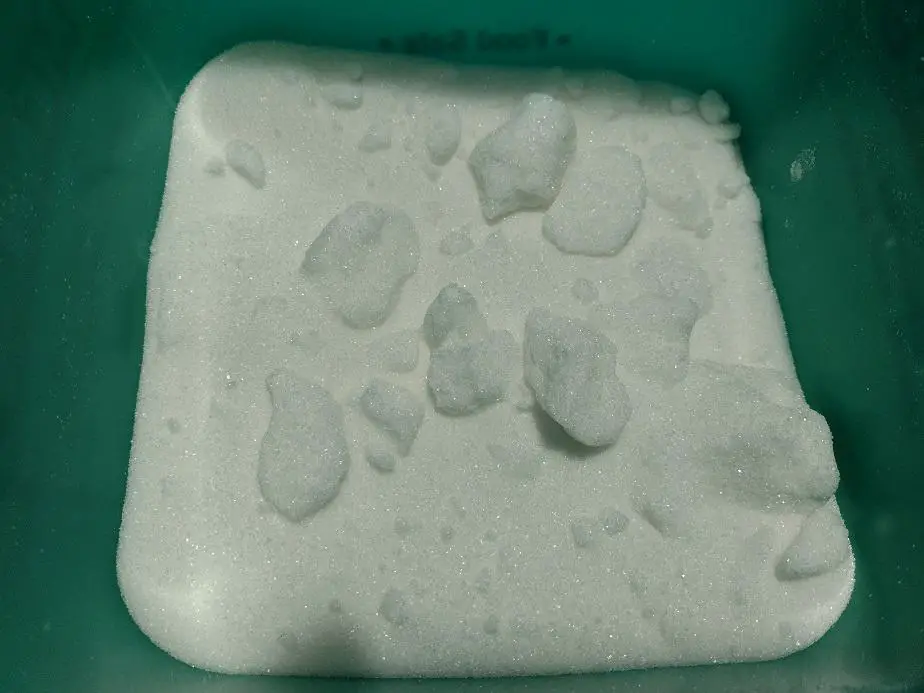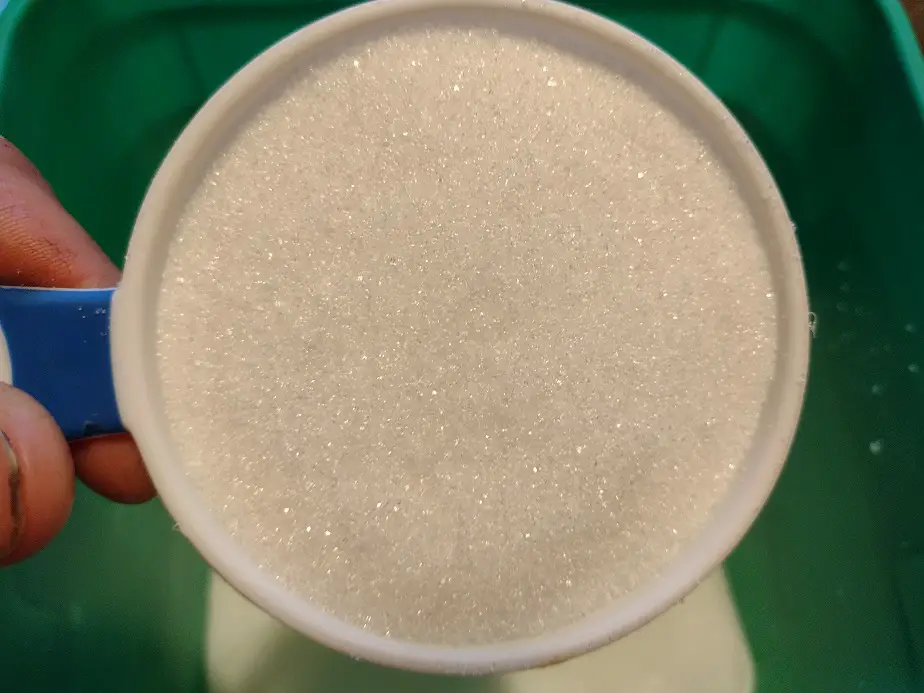Sugar has been a major food commodity since the 1500s and is highly valued for its energy content during hard times. We don’t eat much sugar but we do have a large bucket full in the pantry.
Store bulk sugar long-term in a sealed food-grade bucket. Sugar will last forever if it’s kept dry and away from bugs and rodents because it cannot rot and doesn’t oxidize, but moisture will cause it to clump. Sugar absorbs smells and flavors from other things, so it should remain sealed in storage.
But is sugar really a good thing to stock up on? Despite nutrition and health concerns, it can be an essential part of food stores if used properly.
Why You Should Store Stock Up on Sugar
Sugar is pure carbohydrates. Carbohydrates equal energy. That’s one reason it’s actually a good thing to have stocked up for a long-term emergency. During the food shortages of both world wars, sugar was highly revered as a way to add calories to an otherwise non-filling meal.
In fact, some authorities claimed sugar helped people not starve. Now, I’m not talking about trying to sustain yourself on just sugar, but the fact is that when Europeans were living on turnips instead of potatoes (easier and faster to grow) adding a spoon of sugar became a reliable source of carbs.
When added to a nutritious but low-calorie meal, sugar can become a valuable part of a diet simply due to its food value. Sugar has been and still is considered a smart thing to stock up on for a situation where the grocery stores might be empty for a while.
Sugar is not the most calorie-dense food by far. Refined sugar has 16 calories per teaspoon. A teaspoon of flour only has around 10 calories, but a teaspoon of cooking oil has around 40 calories. Unlike oil, sugar doesn’t go bad, it tastes good, and it’s used as a preservative.
The fact that it never goes bad is the main draw of storing sugar as part of your emergency preps. Another thing that pretty much never goes bad is vinegar, but that still has to be stored with more thought. I wrote an article on storing vinegar long-term. Here’s a link to it.
Sugar will clump up quickly if it’s humid. That’s why storing it in the fridge or freezer is not recommended. Every time you take it out and open it, condensation will create some moisture in the sugar and it will get pretty hard. Room temperature is preferred.
Sugar adds energy, and it makes an otherwise unappetizing meal much better. That’s why you should stock up on a bit of sugar.

How to Use Sugar as a Calorie Supplement
You probably heard something about sugar being bad for you and having too many calories. Sugar isn’t necessarily bad unless you have blood sugar issues. Sugar, being a water-soluble form of pure carbs, is quickly absorbed by your body and transported to the bloodstream.
It happens so fast that it causes a rather sudden spike in blood sugar. High blood sugar is one of the things that tell our body to take the energy and store it as fat. For some people, eating a lot of sugar actually gives them less energy because instead of using it, the body tries to convert it to fat.
The blood sugar spike, then sharp fall, is responsible for the energy burst then tiredness people tend to feel after eating a lot of candy or chocolate chip cookies. In certain situations, even that tired, dreary spell could be dangerous.
When sugar is added to things containing longer chain carbs, like starch and fiber, the blood sugar has less of a sudden up and down. It will still jump up from the sugar, but won’t crash down after. If you’re not used to sugar, you should start easy on it to let your body acclimate to using it.
A single tablespoon of sugar isn’t really much. That’s only about 48 calories. considering you need between 1,500 and 3,000 calories per day, that’s not much. There are 3 tablespoons (144 calories) of sugar in a can of coca-cola. That’s not considered a lot for a day. A spoon of fruit jam is usually half sugar.
Sugar can be used to add energy to a meal high in vegetables, which is very common during times of national distress. Looking back on times of drought, wars, and famine, meats become scarce and people have to sustain themselves on lesser-calorie vegetables.
All concentrated sugars, including white and brown sugar, honey, and corn syrup have about the same amount of carbs and calories. And, they all have a similar effect on blood sugar.

Using Sugar as a Food Preservative
Sugar draws water away from the cell walls of bacteria, allowing things to never go bad. Sugar draws water out of food, and replaces the water with itself. That creates an environment that won’t allow microbes to live. Its preserving qualities are arguably its most valuable trait.
Sugar doesn’t preserve quite as good as salt, so it takes more to get the job done. a solution such as jam or jelly is traditionally half-sugar to make sure it stays preserved. Jams and jellies are preserved through a combination of acid content, sugar, and pectin.
All the recipes I’ve found for Sugar curing meat also use either curing powder (nitrates) or salt. I can’t find anything on using just sugar as a meat preservative. Even the old Appalachian methods I’ve seen all use salt as the main preservative.
Traditionally, meat was cured for storage in the fall or winter, when temperatures got close to freezing. The cold temperatures keep the meat from spoiling while the bring or dry rub soaks in and cures the meat. Like the old ways, meats could be cured as simply as coating them with a thick layer of salt.
It’s accepted that sugar isn’t strong enough on its own to preserve meat, however, science tells me it should work if you use enough sugar and give it time to penetrate. I’m going to run my own experiment using sugar as a dry curing rub, but that will have to wait until cold weather.
The old, traditional way of curing meat, either with salt or a salt/sugar mix, was to either rub it in or make a brine and soak and pack it in barrels or crocks. This was only done in cold weather, usually between 33 and 40 degrees.
Once the weather started to warm up, the meat still may have spoiled if it had not been fairly well dried. A smokehouse was often used either by cold smoking in the winter or hot smoking in the spring to dry it out quickly. Smoking is a lot of fun. I hope to build a smokehouse in the future.
Related articles:

